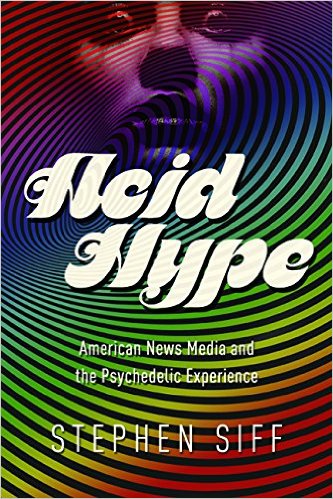
This comprehensive narrative charts the psychedelics’ (mostly LSD) fall from grace after a “Midcentury fascination with LSD and the mystical, mind-expanding ‘psychedelic’ experience…” (Siff, Introduction). Initially headlines such as “Drugs that Shape Men’s Minds” (Saturday Evening Post, 1958) and “Can this Drug Enlarge Man’s Mind (Horizon, 1963) shaped the public perception of psychedelics, during a time when they were not yet prohibited drugs. LSD was depicted as the darling of the Hollywood and intellectual set. Cary Grant spoke of gaining personal insights through weekly LSD therapy sessions. Henry Luce, the American magazine magnate and prominent Republican, asserted influence through Life and Time magazines’ defending of “the importance of LSD experiences even while condemning its reckless use” (Siff, pg. 15).
As a wave of LSD swept the college scene in 1965, irresponsible use depicting the potential dark side of psychedelics became the media sensation. This included exaggerations and untruths such as the 1967 Associated Press claiming a group of LSD users had permanently damaged their retinas by staring at the sun. Timothy Leary, an influential clinical psychologist affiliated with Harvard before his dismissal in 1963, fueled the paradigm shift through his increasingly outrageous statements as he became the “high priest” of LSD. At the 1967 Human Be-In in San Francisco, Leary uttered the mantra “Turn on, tune in ,drop out” – perceived as a direct threat to the status quo.
Articles emphasizing risks from LSD seemed less concerned with factual accuracy than dramatically pressing a point (pg. 155). This was encouraged by the Nixon administration as the War on Drugs took the place of the Vietnam War. LSD was said to cause deformed babies, incurable bone cancer and bone-breaking epileptic seizures (Saturday Evening Post, August 12, 1967). None of these exaggerations were true. Time and Life continued to offer hope that LSD had a future in prescribed settings while also reporting on the eye-popping imagery seen by people on LSD. With the death of Henry Luce in February of 1967, the Life/Time editorial viewpoint moved away from its interest in LSD. As journalistic coverage faded, cinematography took up the psychedelic mantle, mostly trying to recreate the experience.
Much like LSD, the conveyed LSD experience was subject to the “set and setting” of the reporter and source. As the dose (coverage) increased it was only a matter of time before the paradigm shifted and the bad acid trip of the 70s began. We are now coming out of that trip and careful attention must be paid to how to work with the media to portray psychedelic research’s promising future without the bad trip.
Fatal error: Uncaught TypeError: count(): Argument #1 ($value) must be of type Countable|array, null given in /www/library/review/review.php:699 Stack trace: #0 {main} thrown in /www/library/review/review.php on line 699

